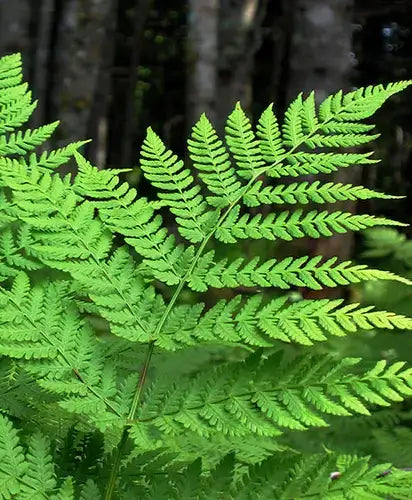Wild ferns are plants that are as unusual as they are beautiful
They do not produce seeds like other plants. They produce spores and have a more complex reproductive cycle. These spores are usually found on the underside of the leaves in tiny capsules or sporangia. The sporangia, in turn, are arrayed in clusters called sori. They may be found on a separate, fertile frond.
The plants usually have flat leaves on a stalk, and the leaves may be simple or compound. A compound leaf can be divided into one to three subleases. The edges of the leaves of a fern can be toothed, lobed or entire. Some wild Ferns ferns have more than one type of leaf. These leaves or fronds unroll from fiddleheads, edible in some wild species.
Grape Ferns
This family of ferns includes the grape fern, the rattlesnake fern, and the moonwort. They get their name because they bear their sporangia in clusters that look like grapes.
The moonwort can grow in dry places, including cliffs and dry meadows. It is somewhat uncommon but is striking for its moon-shaped leaves. It grows to about 6 inches in height.
The grape fern can be found throughout the eastern United States and sometimes in the midwest and southwest. The sterile leaves have a triangular shape and can be three inches long. They have a lacy look. The fertile spike is 6 to 10 inches tall, and the yellow sporangia appear in the autumn. The grape fern is found in woods and open pastures.
The rattlesnake fern can grow to 2 feet tall and is expected in the Northern hemisphere. It has a triangular leaf that’s divided and subdivided into leaflets. The sporangia are found in the spring or early summer and persist for several months.
Polypody Ferns
That is the most prominent family of Ferns ferns. The licorice fern has thin, tapered leaves with pointed lobes and gets its name because the root tastes like licorice. The leaves are from 5 to 20 inches long.
Resurrection Fern
This common fern has leaves that curl and turn brown when dry but revive when the plant is watered, which gives it its name. It is an epiphyte and is found on trees and rocks in the tropics through the eastern part of North America. It grows from 1 to 7 inches high.
Common Polypody
This fern grows in damp, cool, shady woods on logs or rocks; The sori are very noticeable on the underside of the leaflets. The fern grows from a rhizome with reddish scales and grows from 6 to 12 inches tall.
Maidenhair Fern
This beautiful fern is known for its finely divided, almost horseshoe-shaped leaves that grow from 4 to 16 inches wide. It is prized as a houseplant. The leaflets vary from fan-shaped to oblong, and the tips of the leaves conceal the sori. The shiny, black leafstalk contrasts with the green of the leaflets. A similar Venus Maidenhair Fern is found in the tropics and warm temperate regions around the world. It grows from 10 to 18 inches tall.
Ferns are beautiful and easy to care for plants that generally don’t need pampering. They add a touch of grace to any room they’re in.
Rattlesnake





